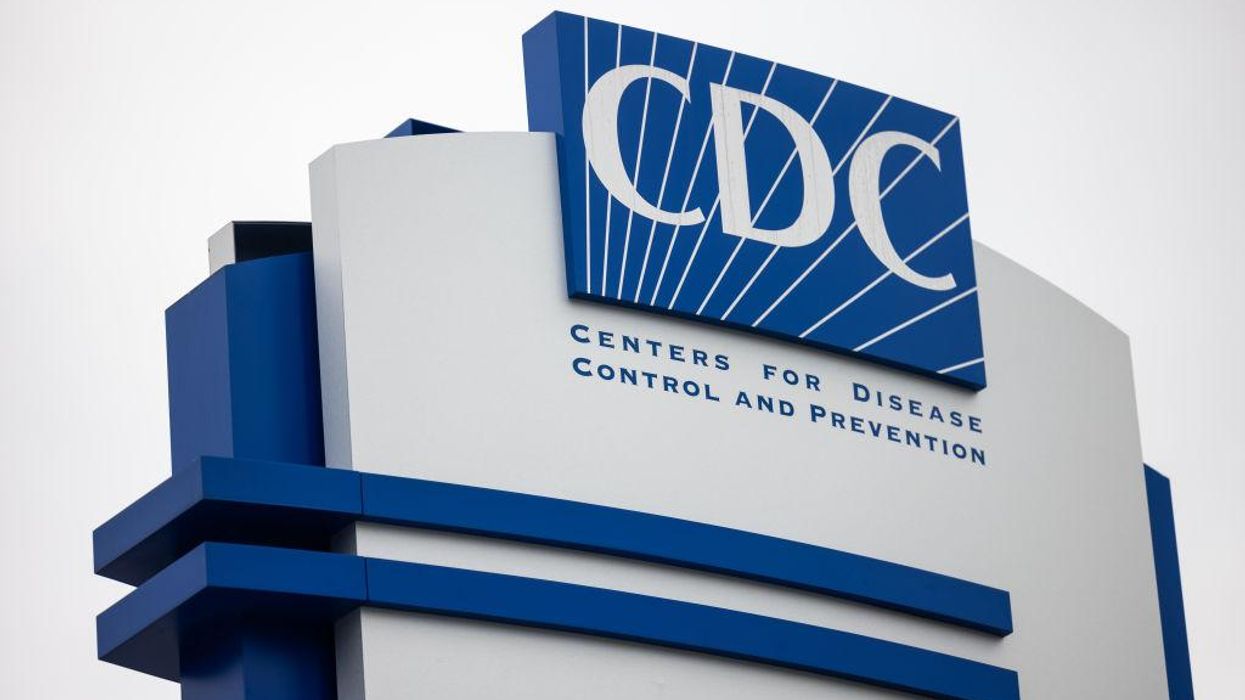
Photo by Nathan Posner/Anadolu Agency via Getty Images

As its name suggests, the Centers for Disease Control and Prevention is tasked with preventing the spread of diseases. One CDC division is, however, working to help facilitate the spread of LGBT activists' radical social agenda in schools.
The CDC's Division of Adolescent and School Health purportedly "promotes environments where youth can gain fundamental health knowledge and skills, establish healthy behaviors, and connect to health services to prevent HIV, STDs, and unintended pregnancy."
The division also apparently endeavors to help schools stay engaged in LGBT activism and up to date with social constructivist terminology.
DASH has repeatedly pushed an October 2020 document entitled, "LGBTQ Inclusivity in Schools: A Self-Assessment Tool," on teachers and school administrators alike.
Most recently, DASH tweeted on Dec. 27, "School administrators: Our LGBTQ inclusivity self-assessment tool can help you quickly gauge inclusivity at your school. See your score today and learn ways to increase inclusivity," with a link to the document.
\u201cSchool administrators: Our LGBTQ inclusivity self-assessment tool can help you quickly gauge inclusivity at your school. See your score today and learn ways to increase inclusivity: https://t.co/mXgPtVtg24\u201d— CDC\u2019s Division of Adolescent and School Health (@CDC\u2019s Division of Adolescent and School Health) 1672146185
The document contains a self-assessment.
The purpose of the self-assessment is to approximate how close to conformity a teacher, classroom, or school is with the LGBT dogmas of the day.
Greater conformity means more "inclusive school environments, policies, programs, and practices" for "lesbian, gay, bisexual, transgender, and queer/questioning" students.
According to the document, "School and district staff who are interested in facilitating a more inclusive environment for LGBTQ students can use this tool to assess individual-level knowledge, attitudes, and behaviors that foster inclusivity, in addition to determining strengths and weaknesses in current school-level inclusive policies, programs, and practices."
Inclusivity, defined in the DASH document, does not mean accommodating all peoples, ideologies, or religious views, but instead entails "the practice of elevating people and communities who, for cultural and historical reasons, may be been [sic] excluded or marginalized by dominant groups."
School administrators or educators' responses in this assessment "will be used to identify and provide resources and recommended action steps to improve inclusivity."
Those who use the tool to rate their educational environment can fall into one of three categories: "Highly Inclusive," "Moderately Inclusive," and "Minimally Inclusive."
Those in the first category (A) are minted "Awesome All[ies]."
While told "there is always more you can do," they are instructed to keep up the "good efforts."
Those in the second category (B) who have apparently made an effort to fall in line, but not uniformly so "still have room to grow."
They are told to "work on broadening your horizons further, address your barriers, and expand your efforts further towards being an ally."
Those in the third category (C) who have failed to meet the CDC's expectations for fidelity to LGBT activists' conventions "are not yet well prepared to provide inclusive and supportive environments for LGBTQ students."
They are told to "commit to making changes."
According to the document, those educators or administrators to whom the following statements apply "minimally or not at all" would fall into the third (C) category:
DASH has suggested that an educational institution's success and inclusivity require, among other things, that educators sever biological sex from gender identity; display activist symbols in the classroom; hijack the curriculum with activist content; defer to dysphoric children on naming conventions; and actively censor speech regarded by activists as "harmful."
In addition to the content fleshed out in the document, DASH's "LGBTQ Inclusivity in Schools: A Self-Assessment Tool" cites as resources various lobby and activist groups' pages such as GLAAD and the Human Rights Campaign and links to the "LGBTQIA+ Glossary of Terms for Health Care Teams."
This particular glossary suggests that "Biological female/male" are outdated terms and claims that "Assigned female/male at birth" should be used instead.
Another resource hyperlinked in the document is the PFLAG activist guide "to being a straight ally."
According to the guide, to be a "Super Ally," a straight person must be keen to "change some laws."
The guide — which does not discuss health despite having significant real estate in the CDC's guide — expressly articulates the need for readers to transform the thinking and the conversations in their workplaces, schools, civic organizations, houses of worship, and families.